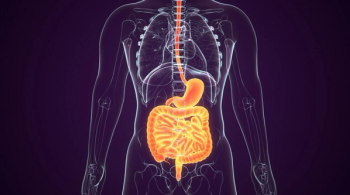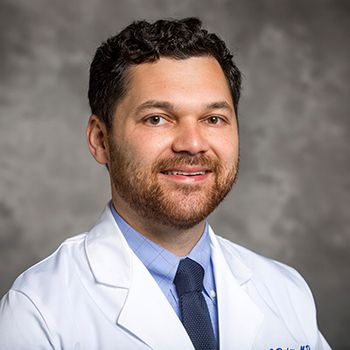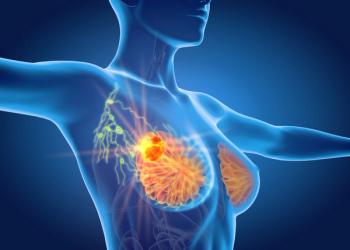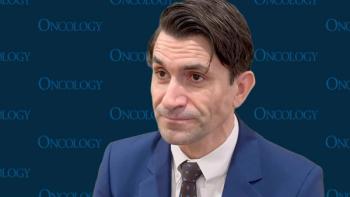
Concurrent CRT Garners Disease Control, Safety in SCLC Regardless of Age
Patients 70 years or older with limited stage small cell lung cancer appear to tolerate concurrent thoracic chemoradiotherapy and have similar disease control rates as younger patients.
A twice daily chemoradiotherapy (CRT) regimen for limited stage small cell lung cancer (LS-SCLC) yielded similar outcomes for patients 70 years or older and those younger than 70 years, suggesting that older patients may be able to receive similar treatment as younger patients, according to findings from a phase 2 trial (NCT02041845).
There was no statistically significant difference in 2-year overall survival (OS) rates between patient groups; the 2-year OS rates were 67% (95% CI, 57%-75%) for patients younger than 70 years and 51% (95% CI, 37%-65%; P = .061) for those 70 years or older. Univariate analyses involving age indicated a trend towards shorter survival with increasing age (HR, 1.03; 95% CI, 1.00-1.05; P = .055).
The median progression-free survival was 15.9 months (95% CI, 8.5-23.3) for patients younger than 70 years and 12.2 months (95% CI, 7.5-17.0) for those 70 years or older (HR, 1.35; 95% CI, 0.92-1.99; P = .13). Additionally, the median time to progression (TTP) was 18.6 months (95% CI, 10.4-26.8) vs 15.8 months (95% CI, 8.6-23.0) in each respective group (HR, 1.0; 95% CI, 0.6-1.5; P = .96).
Investigators highlighted no statistically significant differences in PFS or TTP in either age group.
“Survival was shorter for older patients but considering that there were no statistically significant differences in PFS or TTP [vs younger patients], our study indicates that older patients [with] LS-SCLC should be offered similar, twice daily [thoracic radiotherapy] TRC as younger patients,” the study authors stated.
Investigators of the randomized phase 2 trial assessed CRT for patients with limited stage SCLC. Patients were randomly assigned to receive TRT at a dose of 45 Gy in 30 fractions or 60 Gy in 40 fractions. Moreover, patients were treated with concurrent platinum/etoposide chemotherapy.
In a preplanned subgroup analysis including patients 70 years or older, the primary end point was OS. Secondary end points included toxicity and health-related quality of life (HRQOL), and exploratory end points included response rates, PFS, and TTP.
Investigators collected HRQOL measures based on the European organization for Research and Treatment of Cancer Quality of Life Questionnaire-Core 30 and its lung cancer module, the Quality-of-Life Questionnaire-Lung Cancer 13
Patients 18 years or older with an ECOG performance status of 0 to 2 were eligible for enrollment on the trial.
Investigators included 170 patients in the efficacy analyses, with 89 receiving the 60 Gy fractionation schedule and 81 receiving 45 Gy fractionation schedule. Additionally, 69% (n = 117/170) of patients were younger than 70, and 31% (n = 53/170) were 70 or older.
The median patient age was 65 years (range, 36-82). Most patients were female (57%), current or former smokers (98%), had an ECOG performance status of 0 or 1 (89%), and had stage III disease (84%). Investigators reported no statistically significant differences in baseline characteristics between the older and younger patients.
In terms of HRQOL, 88% of patients who started TRT completed at least 1 questionnaire. During the first year, there were no differences in global quality of life or physical function between older and younger patients. During the second year, however, patients 70 years or older reported a clinically significant decline in physical functioning compared with younger patients.
In terms of cognitive function, there was a clinically significant decline for younger and older patients, although the reduction was more notable for older patients. Emotional functioning was stable for older patients, and younger patients indicated significantly better emotional functioning 2 years following treatment.
Grade 3/4 toxicity occurred among 89% of patients who received TRT. Among patients younger than 70 and those 70 or older, respectively, the rates for grade 3/4 toxicity were 85% and 92% (P = .31), 82% and 92% (P = .11) for grade 3/4 hematological toxicity, and 52% and 48% (P = .74) for grade 3/4 non-hematological toxicity.
There were 3 patients over 70 years who died during the study, due to myocardial infarction (n = 1), neutropenic infection (n = 1), and pneumonitis (n = 1). Additionally, 3 patients younger than 70 died due to aortic dissection (n = 1), thrombocytopenic bleeding (n = 1), and cerebral infarction (n = 1).
Reference
Killingberg KT, Grønberg BH, Slaaen M, Kirkevold Ø, Halvorsen TO. Treatment outcomes of older participants in a randomized trial comparing two schedules of twice-daily thoracic radiotherapy in limited stage small-cell lung cancer. Journal of Thoracic Oncology. Published online January 27, 2023. doi:10.1016/j.jtho.2023.01.012.
Newsletter
Stay up to date on recent advances in the multidisciplinary approach to cancer.
















































































